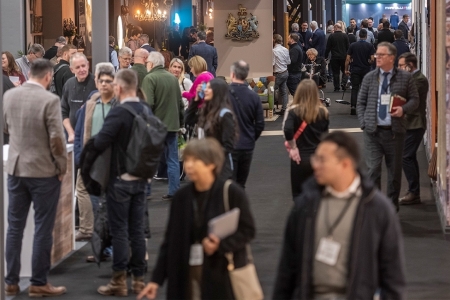Circular design and digital traceability are fast becoming important watchwords across the furniture sector, as consumer demand and new regulatory frameworks increasingly demand more sustainable approaches to buying and selling furniture. Ahead of the upcoming January Furniture Show, Simone Ward, content manager at Clarion Events, writing for online resource hub, Retail Revealed, looks at the imminent impact of ESG on retail …
As ESG commitments move from theory to practice, 2026 is shaping up to be the year when furniture retailers double down on two powerful, interconnected priorities – circular design and digital traceability. Together, they are redefining how products are conceived, sourced, sold and resold, helping brands and independents alike meet rising consumer and regulatory expectations for transparency and sustainability.
Circularity and its commercial momentum
Circular design has become a benchmark for innovation across the sector. In the UK, 70% of furniture businesses now integrate recycling, remanufacturing, or other circular economy principles into their product development strategies, while 81% plan to expand investment in circular practices from 2025 onwards.
Globally, circular production in furniture increased by 22% in 2024, while the sustainable furniture market is expected to account for 30-40% of total market growth in 2026. This signals that circularity has shifted from niche to necessity. The European sustainable furniture sector, currently valued at £18.5b, is projected to reach £42b by 2032, reflecting an impressive 11% CAGR as sustainable design becomes a commercial norm across EU markets.
Meanwhile, the secondhand furniture market, valued at $34b and growing at a 7.7% CAGR toward 2030, demonstrates how reuse, resale and refurbishment are unlocking new revenue streams. Increasingly, the lifecycle of furniture extends far beyond its first sale, strengthening the business case for circularity as much as the ethical one.
Digital traceability meets consumer and regulatory demand
If circularity defines what we create, digital traceability determines how we prove it. Across Europe, regulatory frameworks such as the Ecodesign for Sustainable Products Regulation (ESPR) are accelerating adoption of digital product passports (DPPs), giving every product a unique identity that verifies its origin, materials and environmental footprint.
This shift is not just compliance led – it is consumer driven. Between 76-78% of consumers now say they want credible proof of sustainability credentials and are willing to pay more for eco-conscious products when evidence is clear and trustworthy. As these expectations grow, digital transparency is fast becoming a differentiator in the retail experience.
The impact is also reshaping the commercial segment. Europe’s office furniture market is forecast to reach £4.4b by 2030, as corporate ESG scorecards increasingly drive procurement decisions. Companies embedding transparent sourcing and sustainability practices are now twice as likely to achieve a 10% revenue increase compared to their peers, highlighting the business benefits of measurable impact.
Why ESG matters for furniture retail
By embracing circularity and digital traceability, furniture retailers position themselves as credible partners for both ethics-led consumers and compliance-focused clients. Transparent business models not only mitigate reputational risk but also create new growth opportunities, whether through certified reclaimed ranges, repairable collections, or storytelling around responsibly sourced materials that resonate with younger, value-driven audiences.
Looking ahead – practical actions for 2026
For independents and sector leaders alike, the path forward lies in integration and storytelling. That means partnering with suppliers who can verify sustainable materials, piloting take-back or refurbishment programmes, and leveraging digital tools to showcase each product’s lifecycle.
With sustainability influencing nearly 80% of purchase decisions, and traceability becoming non-negotiable, aligning circular design with verifiable data will be essential to maintaining both trust and market relevance.
As ESG shifts from aspiration to measurable impact, the future belongs to those who connect ethics with aesthetics and design with data, building a furniture industry that is as transparent as it is timeless.














